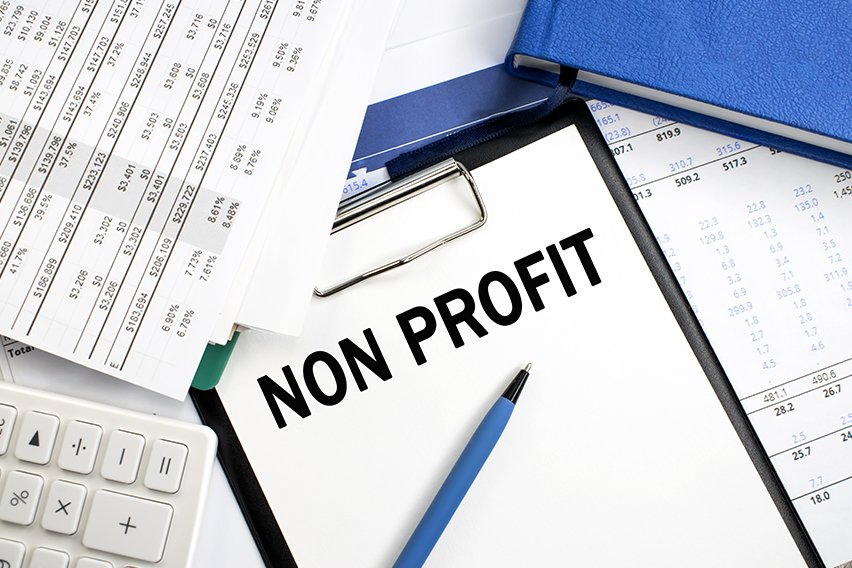How to Calculate Overhead for Nonprofit Businesses

Maintaining the financial records for a nonprofit organization can be challenging yet extremely fulfilling. Most nonprofits provide valuable services and support to individuals and communities, so it’s extremely important for them to be financially sound and accountable.
Since nonprofits don’t generate revenue or exist to make a profit, there are a few nuances to be aware of when it comes to managing the books. Although it’s true that nonprofit organizations operate on a different set of financial guidelines, many of the most basic accounting principles still apply.
In this post, you’ll learn how to calculate overhead costs and percentage if you’re currently serving or plan to work for nonprofits. That way, you’ll be more equipped to develop a budget, track spending, and make changes as needed.
Here’s What We’ll Cover:
Introduction to Overhead for Nonprofits
1. Look at the Past Fiscal Year
2. Create a Detailed List of Monthly Overhead Costs
3. Create a List of Quarterly and Yearly Expenses
4. Add Totals in Each Category
5. Calculate the Overhead Ratio
6. Pursue the Right Tax Reporting
7. Methods for Managing Nonprofit Overhead
8. How to Reduce Nonprofit Overhead Costs
Manage Your Nonprofit Accounting
More Resources for Nonprofit Accounting
Introduction to Overhead for Nonprofits
Nonprofits often exist as a direct result of fundraising, grants, sponsorships, and donations. These important sources of cash allow nonprofits to grow in their mission, carry out projects, and use key staff members to assist in the community. Incoming cash also provides a way for nonprofit organizations to fund many of the same overhead costs that traditional businesses have to pay.
Having a good grasp of your nonprofit overhead is extremely important for many reasons. One of the most critical reasons is that stakeholders and donors aim to keep nonprofits accountable for how and where they allocate sources of funding. If your overhead costs are needlessly high, some donors may pull back or vocalize concern.
Below, we’ll share some of the primary sources for overhead costs in your nonprofit organization or charity. We’ll also break down the six steps you need to start calculating and managing your overhead as soon as today.

Overhead Examples for Your Nonprofit
As you begin to think about your nonprofit overhead expenses, consider some of the primary sources. This includes administrative costs that keep nonprofits running, such as:
- Rent for office space
- Event-related charges
- Basic utility bills
- Office and administrative supplies
- Software subscriptions
- Travel costs
- Fundraising costs
- Marketing and advertising fees
- Staff salaries and benefits
In addition to these basic examples, nonprofits are unique in how they operate. One overhead category might even be specific to fundraising projects alone. This could include program activity costs, ticketing, record keeping, temporary staffing needs, and any form of solicitation for the services provided.
Based on this complexity, some nonprofits benefit from the help of a professional accountant to help categorize overhead more effectively.
1. Look at the Past Fiscal Year
The first step in calculating your nonprofit overhead is to look at the past fiscal year. As you scan records, receipts, and payments, look for those costs which could be classified as “indirect.”
This means that you should include anything that drives your nonprofit organization forward by helping it stay afloat from an administrative standpoint, without being a direct expense associated with a particular activity or charitable service.
If you need inspiration or reminders, explore your bank statements or credit card records. These sources can help you avoid skipping over important charges, or neglecting to report a significant expense.
Once you have the first year under your belt, you’ll know what to maintain more carefully moving forward.
2. Create a Detailed List of Monthly Overhead Costs
Next, you’ll want to carefully examine your nonprofit’s month-to-month costs. Don’t forget to seek out the advice of anyone on staff who is qualified to make payments on behalf of the organization, or who manages a specific part of recurring operational costs. These individuals can provide insight into charges that could easily be overlooked by the group as a whole.
By establishing a monthly list, you’ll have more visibility into what is essential and what is optional. You can also forecast or predict how your overhead expenses fluctuate, or whether they remain the same with time. The ability to produce a good budget relies on this step.
There are typically direct costs as well as indirect costs associated with running nonprofits. Your goal is to keep a detailed accounting of all expenses so you can effectively categorize your expenses, determine your overhead ratio, and better assess the overall financial health of your organization.
3. Create a List of Quarterly and Yearly Expenses
Additionally, you should always include quarterly and yearly overhead costs. These might not cover costs you incur every month, but they are important from an indirect perspective.
A quarterly expense list might include:
- Subscriptions to services
- Insurance premiums
- Industry memberships
- Fundraising expenses
- General expenses
- Applicable taxes
- Staff payroll
4. Add Totals in Each Category
Once you have these lists, the next step is to perform simple addition and add up the overhead costs in each category. This will allow you to see your total or aggregate overhead amount. With this number, you can see how much money nonprofits require for basic overhead.
5. Calculate the Overhead Ratio
Calculating your nonprofit’s overhead ratio is as simple as dividing the total overhead costs by the total amount of monthly income.
For nonprofits, this income is not based on business revenue, but on the incoming donations or funds that keep things afloat. The simplest way to see this is with the equation:
Overhead costs / incoming cash from the same time period = Overhead rate
Ideally, nonprofits should not exceed a 35% overhead rate. A percentage higher than this might indicate spending that’s disproportionate to the amount of money a group can raise.
6. Pursue the Right Tax Reporting
If your nonprofit organization receives tax benefits from the IRS, it’s even more important to learn how to calculate and categorize your overhead costs correctly. When it comes to tax regulations, you can’t bank on disorganized accounting or inaccurate tracking of fundraising expenses.
The IRS requires you to classify all nonprofit operating expenses correctly and to use proper forms (such as Form 990) which apply to tax-exempt organizations. At the end of the day, these tax benefits are designed to assist nonprofits, and provide financial support and relief.
There is a responsibility on the part of nonprofit employees, however, to understand overhead costs as they relate to tax preparation.
7. Methods for Managing Nonprofit Overhead
If you’re apprehensive about managing overhead costs at your nonprofit organization, there are many options available. Taking the above steps into account will help you get a jump-start on any financial analysis or tax prep that might be required. You can also:
- Leverage powerful cloud-based accounting software like FreshBooks, which not only helps you manage overhead expenses but provides automated accounting support in other ways as well.
- Seek the help of a qualified and professional accountant. Trained professionals can reduce the stress of managing your own accounting while saving you time and money.

8. How to Reduce Nonprofit Overhead Costs
If, after calculating your nonprofit overhead rate, you find that there are areas of excess, it might be time to reduce your overhead costs. You can do this in a number of creative ways while still maintaining exactly what you need. This might involve:
- Choosing budget-friendly or cost-effective office spaces and supplies
- “Going green” wherever possible by eliminating extra costs associated with paper products, utilities, manual records, and filing systems
- Making wise hiring decisions based on a realistic view of your organization’s projected staffing needs and long-term growth
- Renegotiating any existing contracts for services that could be cheaper elsewhere
- Comparing prices and shopping around for the best deals on quarterly or annual expenses
If you prefer to stick with your established overhead costs but still require a solution, the alternative is to increase your fundraising and donation amounts. By doing so, you may be able to offset some of the more expensive costs and tip the overhead percentage in your favor.
Keep in mind, however, that you may have less control over this option than you might have over budgeting and reallocating your existing funds.
Manage Your Nonprofit Accounting
If it’s time to get a better grasp of your nonprofit accounting procedures, you can start today with something as simple as overhead management.
As we’ve shared in this guide, this process always begins with taking a thorough and honest look at your past fiscal years, your current administrative costs, and the realistic budget needs of your organization.
By approaching your nonprofit overhead with a financially sound business process in mind, you can ensure the longevity of your organization, and the confidence of key donors and stakeholders.
When you’re accountable to not-for-profit rules and regulations, this becomes even more essential. Begin the process of calculating your overhead today and reap the benefits for years to come.
More Resources for Nonprofit Accounting
- How to Do Bookkeeping for a Nonprofit
- Accounting for Nonprofit Organizations
- How to Start a Nonprofit Organization
RELATED ARTICLES

 Daycare Accounting: Manage Business Finances in 9 Steps
Daycare Accounting: Manage Business Finances in 9 Steps Accounting Basics for Photography Business Owners
Accounting Basics for Photography Business Owners Real Estate Accounting: A Complete Guide for 2025
Real Estate Accounting: A Complete Guide for 2025 Accounting and Bookkeeping for Your Cleaning Business (Easy 10 Steps)
Accounting and Bookkeeping for Your Cleaning Business (Easy 10 Steps) Construction Accounting: Ultimate Guide for Contractors
Construction Accounting: Ultimate Guide for Contractors Nonprofit Accounting: A Complete Guide with Best Practices
Nonprofit Accounting: A Complete Guide with Best Practices